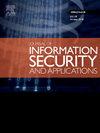数字媒体取证中的深度造假:生成、基于人工智能的检测和挑战
IF 3.8
2区 计算机科学
Q2 COMPUTER SCIENCE, INFORMATION SYSTEMS
Journal of Information Security and Applications
Pub Date : 2024-12-01
DOI:10.1016/j.jisa.2024.103935
引用次数: 0
摘要
深度造假技术给数字媒体取证带来了重大挑战。随着深度造假变得越来越复杂,检测和认定被操纵媒体的能力变得更加困难。主要的挑战在于深度伪造的真实性和令人信服的性质,它可以欺骗人类的感知和传统的法医技术。此外,开源深度伪造工具的广泛可用性和不断增强的计算能力有助于恶意行为者轻松创建和传播深度伪造。深度造假给数字媒体取证带来的挑战是多方面的。因此,开发复杂的检测算法、创建全面的数据集以及建立法律框架对于应对这些挑战至关重要。本文全面分析了当前的深度伪造生成方法及其检测问题。它还探讨了现代基于人工智能的检测技术在打击深度造假扩散方面的潜力。本分析旨在通过强调当前检测技术的局限性,最相关的问题,即将面临的挑战,并建议未来的研究方向,为推进深度伪造检测做出贡献。本文章由计算机程序翻译,如有差异,请以英文原文为准。
Deepfakes in digital media forensics: Generation, AI-based detection and challenges
Deepfake technology presents significant challenges for digital media forensics. As deepfakes become increasingly sophisticated, the ability to detect and attribute manipulated media becomes more difficult. The main challenge lies in the realistic and convincing nature of deepfakes, which can deceive human perception and traditional forensic techniques. Furthermore, the widespread availability of open-source deepfake tools and increasing computational power contribute to the ease with which malicious actors can create and disseminate deepfakes. The challenges posed by deepfakes for digital media forensics are multifaceted. Therefore, the development of sophisticated detection algorithms, the creation of comprehensive datasets, and the establishment of legal frameworks are crucial in addressing these challenges. This paper provides a comprehensive analysis of current methods for deepfake generation and the issues surrounding their detection. It also explores the potential of modern AI-based detection techniques in combating the proliferation of deepfakes. This analysis aims to contribute to advancing deepfake detection by highlighting the limits of current detection techniques, the most relevant issues, the upcoming challenges, and suggesting future directions for research.
求助全文
通过发布文献求助,成功后即可免费获取论文全文。
去求助
来源期刊

Journal of Information Security and Applications
Computer Science-Computer Networks and Communications
CiteScore
10.90
自引率
5.40%
发文量
206
审稿时长
56 days
期刊介绍:
Journal of Information Security and Applications (JISA) focuses on the original research and practice-driven applications with relevance to information security and applications. JISA provides a common linkage between a vibrant scientific and research community and industry professionals by offering a clear view on modern problems and challenges in information security, as well as identifying promising scientific and "best-practice" solutions. JISA issues offer a balance between original research work and innovative industrial approaches by internationally renowned information security experts and researchers.
 求助内容:
求助内容: 应助结果提醒方式:
应助结果提醒方式:


